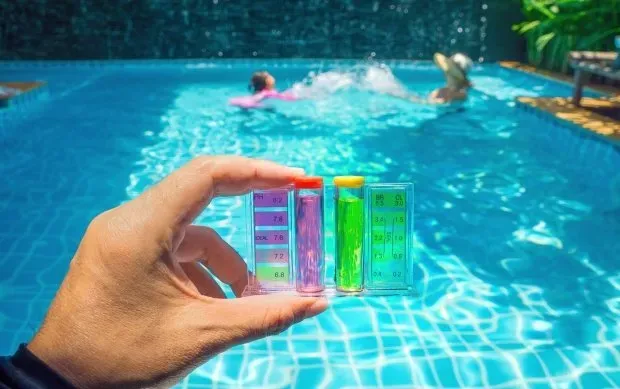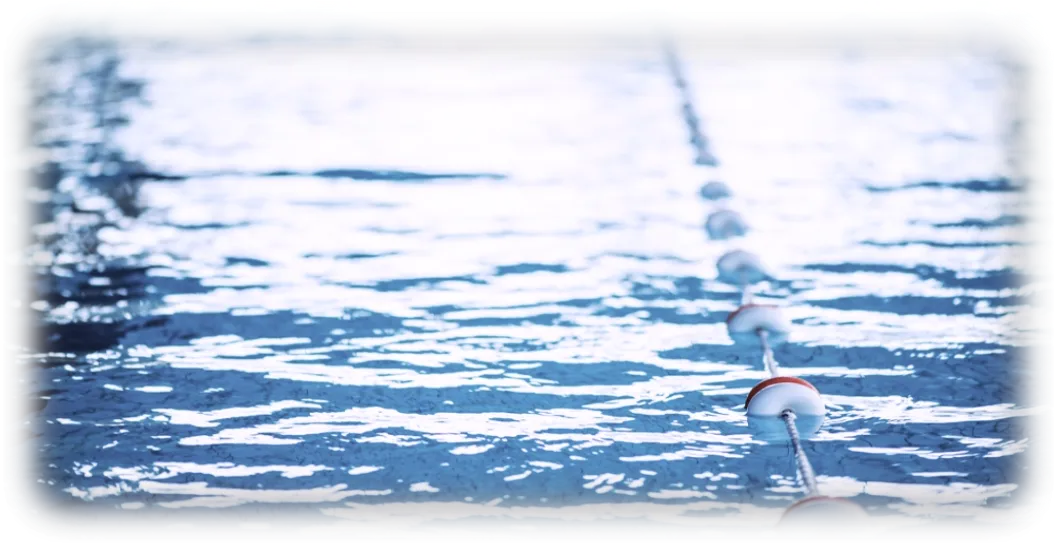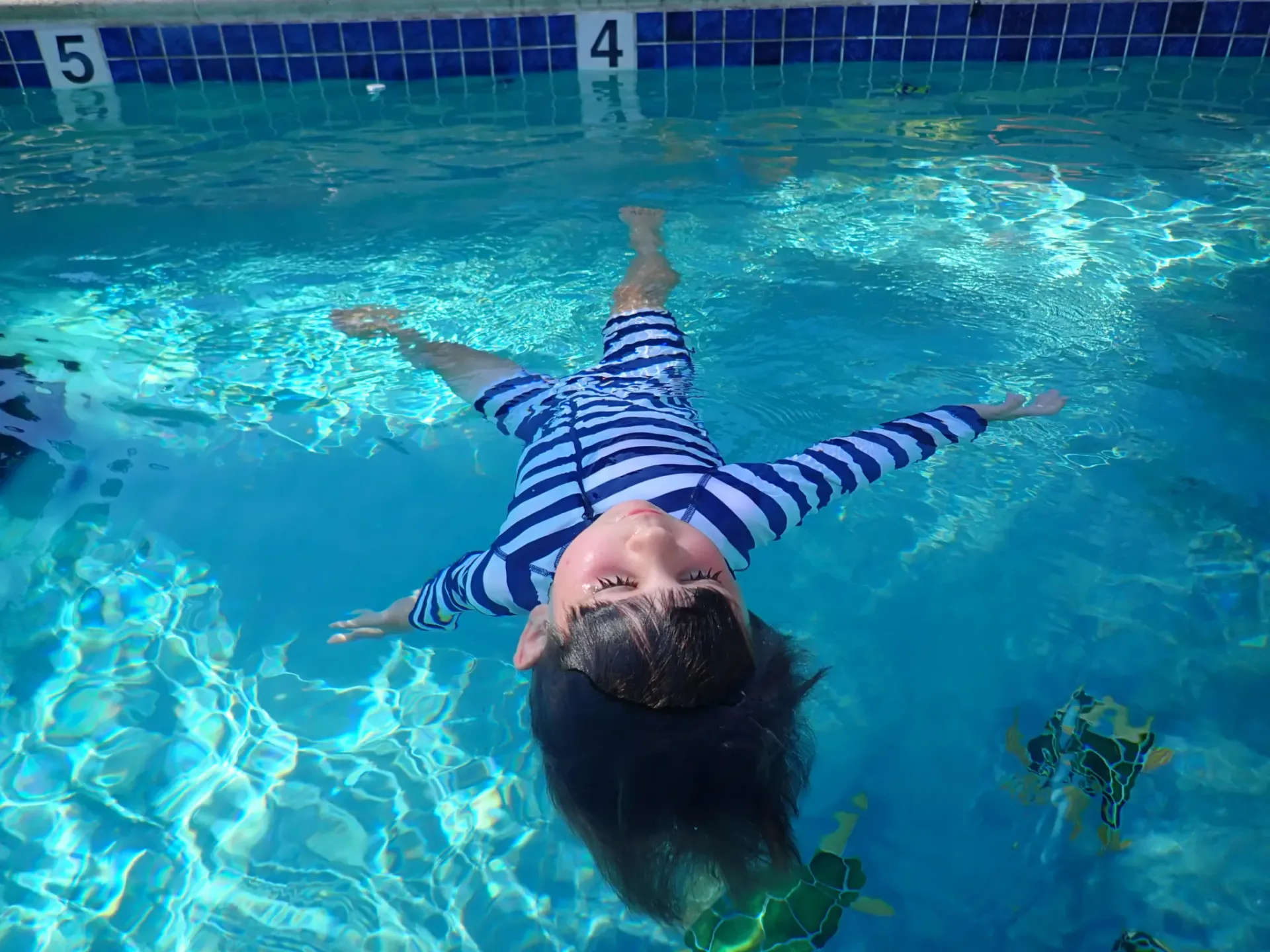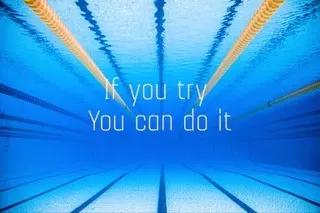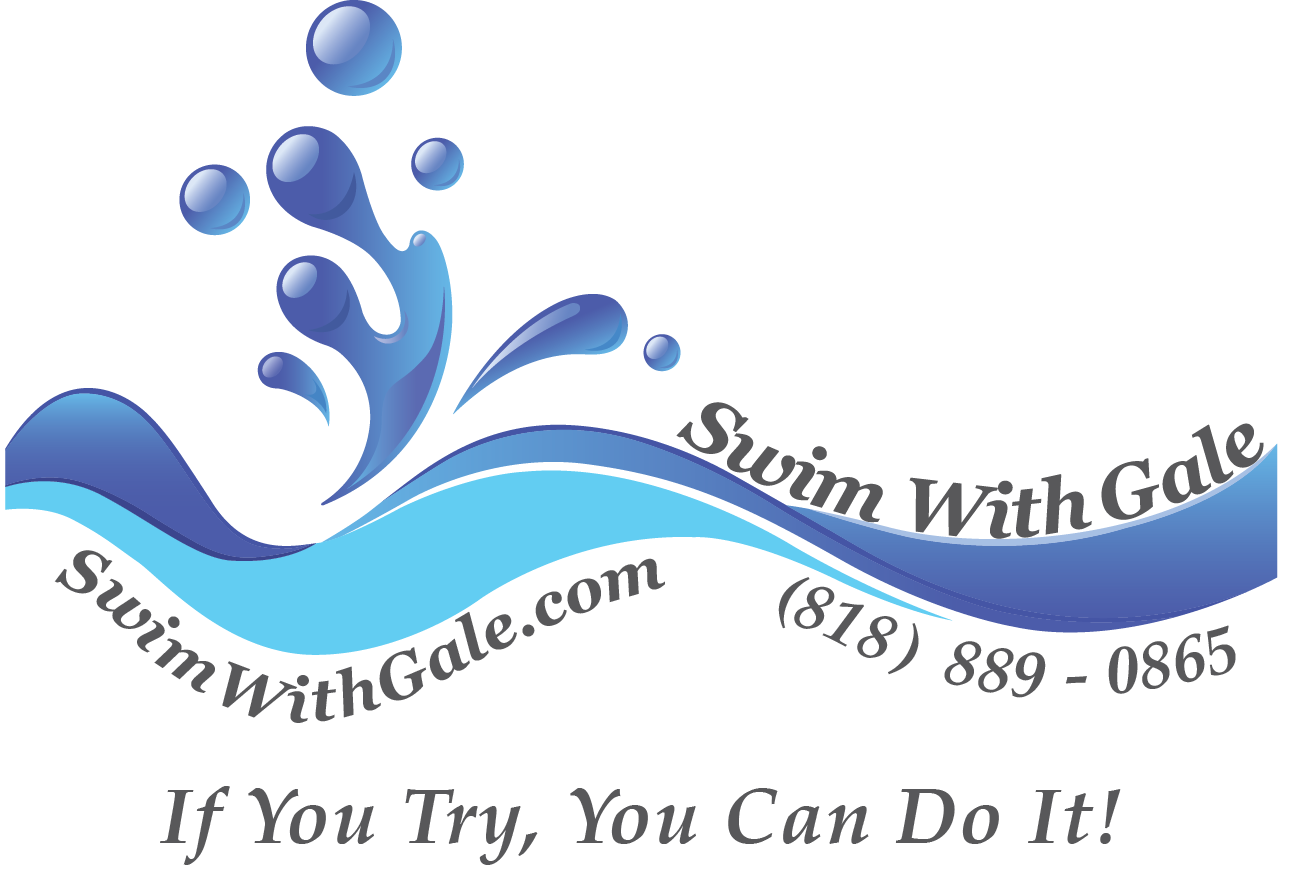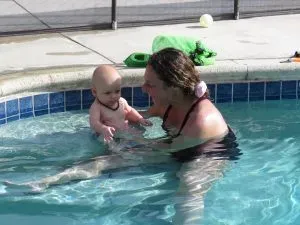February 28, 2021
Water Chemistry Good water chemistry always starts with balanced water. Balanced water is keeping the pH, alkalinity, and water hardness in proper levels. Healthy water is achieved with good water chemistry, followed by proper chlorination and sanitization. Test the pool weekly for pH and chorine levels, (you will need a good test kit to monitor chlorine and water balance levels). Salt chlorine generators can be set to a certain output level, but temperature and changes in weather can use more chlorine than is created, so you must test the pool chlorine level in a saltwater pool, and adjust the output as needed. In addition to testing a saltwater pool for pH, alkalinity, calcium hardness and cyanuric acid, you also now need to test the salinity level, or the amount of salt in the pool, in parts per million, or ppm. Many inground units monitor salt levels. Some display the salt level or have a ‘Low Salt’ indicator light, testing with salt test strips is still a good idea to calibrate or double-check the salt sensor. Saltwater Pools A saltwater pool is not a chlorine-free pool. Saltwater pools create their own chlorine by passing slightly salty water through two electrically charged metal plates, called the Salt Cell. Through electrolysis, salt (NaCl) and water (H20), are converted into chlorine (Cl2), hydrogen (H2) and sodium hydroxide (NaOH), as the water passes through the energized salt cell. Saltwater pools can often be easier to manage, as salt systems administer “free” chlorine into the pool eliminating the need for super chlorination or shocking the pool. This “free” chlorine molecule disinfects and has no nasty smell or irritation. With a salt system you do not get combined chlorine molecules or “chloramines” (chloramines do not sanitize, they do smell and irritate your skin, eyes, and hair). Using a salt system, you will notice less of a chlorine smell in the water, or on the skin after swimming, and no more ‘red-eye’ swimmers. Saltwater Pools vs Chlorine Pools As a recap ~ all pools use chlorine. Saltwater pools simply generate chlorine through a natural process as compared to traditional chlorine pools that rely on adding chemicals to the water. Basically, saltwater pools offer a consistent stream of chlorine that the pool requires, while eliminating the chemical byproducts. This natural salt process is less irritating for skin, hair, clothes, and eyes. The amount of salt in a swimming pool is also not going to cause the kind of irritation and discomfort many associate with the ocean. The water doesn’t taste very salty (it’s a fraction of the salinity of ocean water). Whereas chlorine is incredibly effective as a sanitizing agent, when it’s not maintained just right it can also easily affect your body, leaving your skin itchy, your eyes red and your clothing bleached. Your hair may feel dry and brittle, and blond hair may turn green. Which sanitation system is best for you? Like any other subject matter, everyone has their own opinions – as do we, Swim With Gale uses a salt water system. However, in the end, the choice is ultimately yours. Happy Swimming! Ideal Pool Chemistry Levels pH 7.2 – 7.6 Alkalinity 80 – 120ppm Stabilizer (cyanuric acid) 40 – 60ppm Calcium hardness 200 – 400ppm Free available chlorine 1.0 – 3.0ppm Healthy swimming pool water can be obtained by having good water chemistry followed by proper chlorination and sanitization. Swimming Pool Water Balancing Pool water balancing is simply the relationship between pH, alkalinity, and water hardness. Your swimming pool water is constantly changing, as plant material debris, dirt, body oil and lotions enter the water they also change the water balance. As the water in the pool is not changed very often, continuous filtration and disinfection removes contaminants, which keep the water enjoyable. However, filtration and disinfecting alone does not balance your water. Water Chemistry Definitions pH For optimum chlorine sanitization the ideal range for pH is from 7.2 – 7.6. The ability of chlorine to oxidize matter and kill microorganisms is directly affected by pH. At a pH over 8.0 scaling (precipitation of mineral components) and cloudy water may result. As pH falls below 7.0 the acidic condition will cause irritation to the eyes and mucous membranes of swimmers. Low pH (acidic water) can also corrode metal parts of a pool system and damage the plaster finish. To lower the pH, muriatic (hydrochloric) acid must be added. To raise the pH, soda ash (sodium carbonate) must be added. The human eye has a pH value of 6.5 – 7.6 being just slightly basic. This is, coincidentally, in range with proper pH levels for your pool. In a saltwater pool, the total salt content is approximately that of human tears, which is a lot less than the salinity of ocean water. Yes, kids, that means you can open your eyes underwater! Alkalinity Alkalinity is used to buffer the pH. When the alkalinity is off you then have erratic pH and damage occurs. To lower the alkalinity, muriatic (hydrochloric) acid must be added. To raise the alkalinity, soda ash (sodium carbonate) must be added. If you notice a continuous high alkalinity levels, it is probable due to a high calcium hardness. The recommended levels of alkalinity are 80 -120ppm. Chlorine Chlorine is the most common used chemical for the sanitization of swimming pools. It not only eliminates bacteria and algae by disinfecting it also oxidizes other materials such as plant material debris, dirt, body oils, suntan lotion, etc… After adjusting the pH levels, the next essential chemical is chlorine. The average level for chlorine is 1.0 – 3.0ppm. Super Chlorination (“Shocking”) is the process of adding enough chlorine to raise the chlorine levels above 18ppm. This will burn off the contaminants and kill algae and bacteria. Leaving only the “free chlorine” to sanitize your pool. Cyanuric Acid (Stabilizer) Now that you’ve adjusted the levels of chlorine you will need to add a stabilizer to protect your chlorine from being diminished by the sun. Cyanuric acid protects chlorine levels from UV rays and keeps chemical levels at a steady range. The recommended level for cyanuric acid is 40 – 60ppm. Adding a stabilizer can raise cyanuric acid levels if they are too low. However, if levels are too high simply drain 2” to 3” and add fresh water. Calcium High calcium levels will raise the alkalinity of the pool water making the pH erratic. As calcium levels increase the chlorine levels decrease, diminishing the effectiveness of the chlorine. Recommended levels of calcium hardness fall between 200 – 400ppm. Low levels of pH will etch and corrode the pool and equipment. With high levels of pH, scale deposits form. When calcium levels are too low, balance the level by adding calcium hardness. If calcium is too high, you can drain the water 2” to 3” and add fresh water. Zinc Anode Many pool owners use a zinc anode as part of their pool system. A sacrificial anode is an affordable device you can purchase for added protection against possible corrosion and damage to pool hardware. It’s a good idea to check it once a year to ensure it hasn’t degraded fully. Salt Now that you have balanced water, you are ready to add salt. All salt chlorinators have a suggested range for salt; however, the average typically runs between 2700 to 3500ppm. With some salt chlorinators being as high as 4500ppm.

